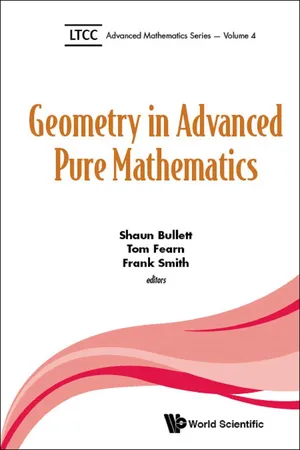
- 236 pages
- English
- ePUB (mobile friendly)
- Available on iOS & Android
About This Book
-->
This book leads readers from a basic foundation to an advanced level understanding of geometry in advanced pure mathematics. Chapter by chapter, readers will be led from a foundation level understanding to advanced level understanding. This is the perfect text for graduate or PhD mathematical-science students looking for support in algebraic geometry, geometric group theory, modular group, holomorphic dynamics and hyperbolic geometry, syzygies and minimal resolutions, and minimal surfaces.
Geometry in Advanced Pure Mathematics is the fourth volume of the LTCC Advanced Mathematics Series. This series is the first to provide advanced introductions to mathematical science topics to advanced students of mathematics. Edited by the three joint heads of the London Taught Course Centre for PhD Students in the Mathematical Sciences (LTCC), each book supports readers in broadening their mathematical knowledge outside of their immediate research disciplines while also covering specialized key areas.
-->
Frequently asked questions
Information
Chapter 1
Algebraic Geometry
1.Introduction
1.1.Solving polynomial equations

Table of contents
- Cover
- Halftitle
- Series Editors
- Title
- Copyright
- Preface
- Contents
- Chapter 1. Algebraic Geometry
- Chapter 2. Introduction to the Modular Group and Modular Forms
- Chapter 3. Geometric Group Theory
- Chapter 4. Holomorphic Dynamics and Hyperbolic Geometry
- Chapter 5. Minimal Surfaces and the Bernstein Theorem
- Chapter 6. Syzygies and Minimal Resolutions